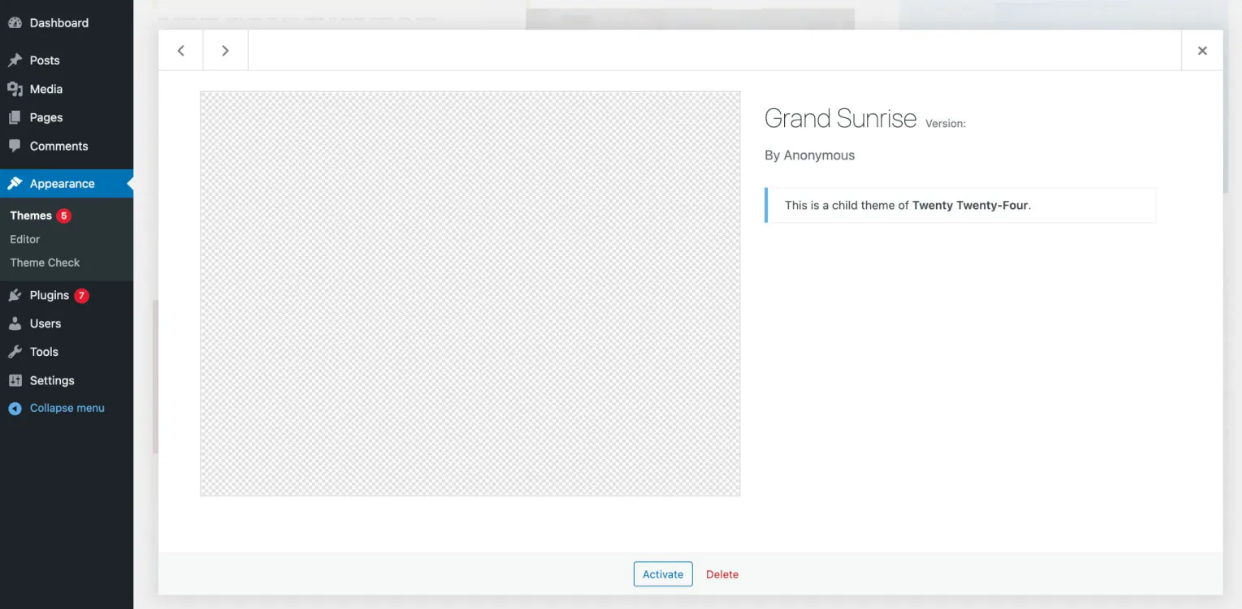Making changes to your WordPress site can be exciting, especially when you’re using code snippets in WordPress to add custom features or tweak your site’s functionality.
But, if you’re not careful, small mistakes can lead to big problems like broken pages or even a complete site crash. Don’t worry, though it’s easier than you think to avoid these common pitfalls!
In this article, we’ll walk you through the most frequent mistakes people make when adding code snippets and explain how to steer clear of them. With a little care, you can safely enhance your site and avoid unnecessary headaches.
Discover the powerful Gutenberg WordPress Themes by WP Radiant, designed for speed, flexibility, and easy customisation. Explore now to build stunning websites with the intuitive block editor experience!
Why Choose Code Snippets In WordPress?
If you’ve ever wanted to customize your WordPress site without installing a bunch of plugins, code snippets in WordPress might be just what you need.
These small pieces of code let you add new features or make changes without the extra weight of a plugin. This keeps your website fast and efficient while giving you more control over how it works.
For example, you can use snippets to create custom post types, add shortcodes, or tweak how your site displays content. Unlike plugins, which can sometimes cause compatibility issues or slow down your site, code snippets are lightweight and tailored specifically to your needs.
Plus, they’re incredibly versatile. Whether you’re adding a new function or modifying an existing one, snippets allow you to make changes that fit your vision perfectly. They’re a simple and powerful way to take your site’s functionality to the next level without relying on too many plugins.
Common Mistakes When Adding Code Snippets in WordPress
Customizing your site with code snippets in WordPress can make it more functional and unique. But if you’re not careful, small mistakes can lead to big problems like site crashes, errors, or lost work.
Let’s go over some of the most common mistakes people make and how you can avoid them.
1. Editing the Core WordPress Files
One of the biggest mistakes beginners make is editing the core WordPress files directly. This includes files like wp-config.php or index.php. It might seem like a quick fix, but this approach is risky. When WordPress updates, your changes will likely be overwritten, and worse, it can cause your site to crash.
Instead, you should use a safer method, like adding your code to a child theme or creating a custom plugin. Both options keep your changes separate from WordPress core files, ensuring they’re safe during updates.
2. Not Using a Child Theme

If you’re adding code to your theme’s functions.php file without using a child theme, you’re asking for trouble. Every time your theme updates, all your customizations will be wiped out.
Creating a child theme is simple. First, make a new folder in your wp-content/themes directory and add a style.css file and a functions.php file.
Then, link it to the parent theme by adding a line of code to the style.css file. Once you activate the child theme, you can safely add your custom code without worrying about updates erasing your hard work.
3. Incorrect Placement of Code Snippets

Another common mistake is not knowing where to place your code snippets. Should they go in the functions.php file, a custom plugin, or somewhere else?
Here’s a quick guide:
-
Use the functions.php file for theme-specific changes.
-
Create a custom plugin for functionality that isn’t tied to a specific theme (e.g., site-wide features).
-
Avoid adding snippets to random files, as it can make debugging and maintenance harder.
Choosing the right location ensures your code works properly and keeps your site organized.
4. Copying Code Without Understanding It
It’s tempting to copy and paste code you find online without really knowing what it does. But blindly adding code snippets in WordPress can lead to security issues, compatibility problems, or even site crashes.
Always take the time to read and understand the snippet before adding it to your site. If something isn’t clear, research it or ask for help from the WordPress community. Testing the snippet in a staging environment (we’ll get to that next) is another great way to spot potential issues before they cause trouble.
5. Not Testing in a Staging Environment
Making changes directly on your live site is a recipe for disaster. If something goes wrong, your visitors might see a broken site or errors.
Instead, always test your code snippets in a staging environment first. A staging site is a copy of your live site where you can experiment without affecting the real thing.
You can create one using plugins like WP Staging or through your hosting provider. Testing in a safe environment ensures your changes won’t disrupt your live site.
6. Forgetting Backups Before Making Changes
Forgetting to back up your site is a common mistake that can cost you dearly. If something goes wrong with your code snippet, you could lose data or break your site.
Before making any changes, create a backup of your site. You can do this manually by downloading your site files and database or by using a backup plugin like UpdraftPlus or BackupBuddy. Having a recent backup means you can quickly restore your site if anything goes wrong.
Learn how to create automatic WordPress backup to protect your website from unexpected data loss and ensure quick recovery.
7. Ignoring Best Practices for Code Syntax

Even a tiny syntax error, like a missing semicolon or an extra bracket, can break your site. These mistakes are easy to make, especially if you’re new to coding.
To avoid this, use a code editor like Visual Studio Code or Sublime Text that highlights syntax errors. You can also use linters, which are tools that check your code for mistakes. By following proper syntax practices, you’ll reduce the chances of errors and keep your site running smoothly.
8. Overloading the functions.php File

The functions.php file is a convenient place to add code snippets in WordPress, but overloading it can lead to problems. Adding too many snippets to this file can slow down your site, create conflicts, or make it harder to debug issues.
A better solution is to create a custom functionality plugin. This keeps your code separate from your theme and ensures it doesn’t interfere with other parts of your site. Plus, it’s easier to manage and transfer if you switch themes in the future.
9. Not Keeping Code Snippets Organized
Adding multiple code snippets to your site without organizing them can get messy fast. You might forget what each snippet does or where it’s located, making troubleshooting a nightmare.
To stay organized, always document your snippets. Add comments in the code to explain what it does and why it’s there. For example:
You can also use a plugin like Code Snippets to manage your snippets in one place. It allows you to label, enable, and disable snippets easily, keeping everything tidy and accessible.
Best Practices For Adding Code Snippets
To use code snippets in WordPress effectively, it’s important to follow a few best practices. First, always add your snippets to a child theme or create a custom plugin. This keeps your changes safe during updates and ensures your site stays functional.
Before making any changes live, test your snippets in a staging environment. It’s the safest way to catch errors without affecting your actual website.
Don’t forget to back up your site before adding or changing any code. Whether you use a plugin or do it manually, having a backup can save you from losing important data.
Also, keep track of your changes by adding comments to your code. This makes it easier to remember what each snippet does and why you added it.
Lastly, review and update your snippets regularly. Outdated code can cause problems over time, so staying on top of maintenance ensures your site runs smoothly.
Discover the WordPress Theme Bundle by WP Radiant, a collection of stunning, responsive, and SEO-friendly themes perfect for any website. Explore the bundle today to elevate your site’s design with professional quality at unbeatable value!
Conclusion
Adding code snippets in WordPress is a fantastic way to customize your site and improve its functionality without relying on too many plugins. But it’s important to avoid common mistakes like editing core files, skipping backups, or testing directly on your live site.
By following best practices like using a child theme or custom plugin, testing in a staging environment, and keeping your snippets organized you can make changes confidently and safely.
Remember, a little preparation goes a long way in preventing problems and ensuring your site runs smoothly. With the right approach, you’ll unlock endless possibilities for your WordPress site.







Add your Comment